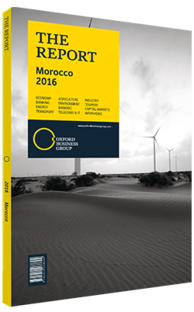Morocco improves intercity links and modernises its rail network
Over the past decade efforts to improve intercity rail links have intensified, with the authorities investing heavily to increase capacity and coverage across the kingdom. Between 2010 and 2015, the government invested Dh34bn (€3.1bn) in the segment, up from Dh18bn (€1.7bn) between 2005 and 2009, and Dh7bn (€641.8m) during the 2002-05 period, according to the Ministry of Transport, Equipment and Logistics. In 2016 the government pledged Dh4.3bn (€394.2m) in investment to the rail network.
While room for improvement remains, investments over the past decade have paid off. In the 2015-16 “Global Competitiveness Report”, published by the World Economic Forum, Morocco ranked 55th out of 144 countries for the quality of its overall infrastructure. Within the assessment, the country’s railroad stood out among other sectors, ranking 33rd.
Intercity Links
With more than 2210 km of tracks, the Moroccan rail network is among the largest in Africa. However, only around 50% of the country’s railway is electrified, and the majority (70%) remains based on a single line.
According to the National Railways Agency (Office National des Chemins de Fer, ONCF), the network recorded 219m passengers in 2010-15, just short of its target, while a total of 212m tonnes of goods were transported, exceeding the target by 22%. The increase in traffic has yielded financial rewards for the state-owned company: over the past five years, ONCF had a cumulative net profit of Dh422m (€38.7m) and a cash flow of Dh7.1bn (€651m).
Some 88% of planned investment projects were completed in the 2010-15 period, including station modernisation works and advanced safety programmes for railway crossings. Important developments under way have included the tripling of the track between Casablanca and Kenitra, the doubling of the entire Settat-Marrakech line and upgrading both the Fez-Oujda and Sidi Kacem-Tangiers lines.
Expansion
According to Aziz Rabbah, the minister of transport, equipment and logistics, the planning of new modern rail links will focus on creating transport hubs near major industrial centres that can serve as multimodal platforms.
In January 2016 the African Development Bank (AfDB) approved a $112.3m loan for infrastructure improvements in the kingdom, among which includes the doubling of a 42-km stretch of the Tangiers-Casablanca-Marrakech railway line between Settat and Marrakech, a route that saw volumes increase by 20% between 2010 and 2014. The allocation follows an earlier $396m loan from the AfDB to fund the modernisation of stretches of the same line.
The projects will allow for increased passenger and freight traffic between the two cities and is scheduled for completion by 2020. As a result of the double track and modernisation works, ONCF projects that the annual passenger volume could significantly increase from its current 4.5m to more than 7.4m, while freight volumes could more than double during the same period of time.
High Speed
Capping efforts to improve intercity rail links is the construction of high-speed train line travelling at a maximum speed of 320 km per hour and linking Tangiers and Casablanca. When finished, the line is set to be the fastest on the continent, surpassing South Africa’s 160-km-per-hour Gautrain commuter rail. By ONCF estimates, more than 6m passengers will use the service during the first year of operations in 2018. Estimated to cost Dh20bn (€1.8bn), the project has been funded by a combination of public and private sector investment, including a total of Dh5.8bn (€531.8m) in public funds, in addition to foreign loans and grants from France, Saudi Arabia, Kuwait and the UAE.
Completion is now for 2018, three years later than originally planned. By April 2016, 78% of the work had been finished, according to local media reports.
You have reached the limit of premium articles you can view for free.
Choose from the options below to purchase print or digital editions of our Reports. You can also purchase a website subscription giving you unlimited access to all of our Reports online for 12 months.
If you have already purchased this Report or have a website subscription, please login to continue.

